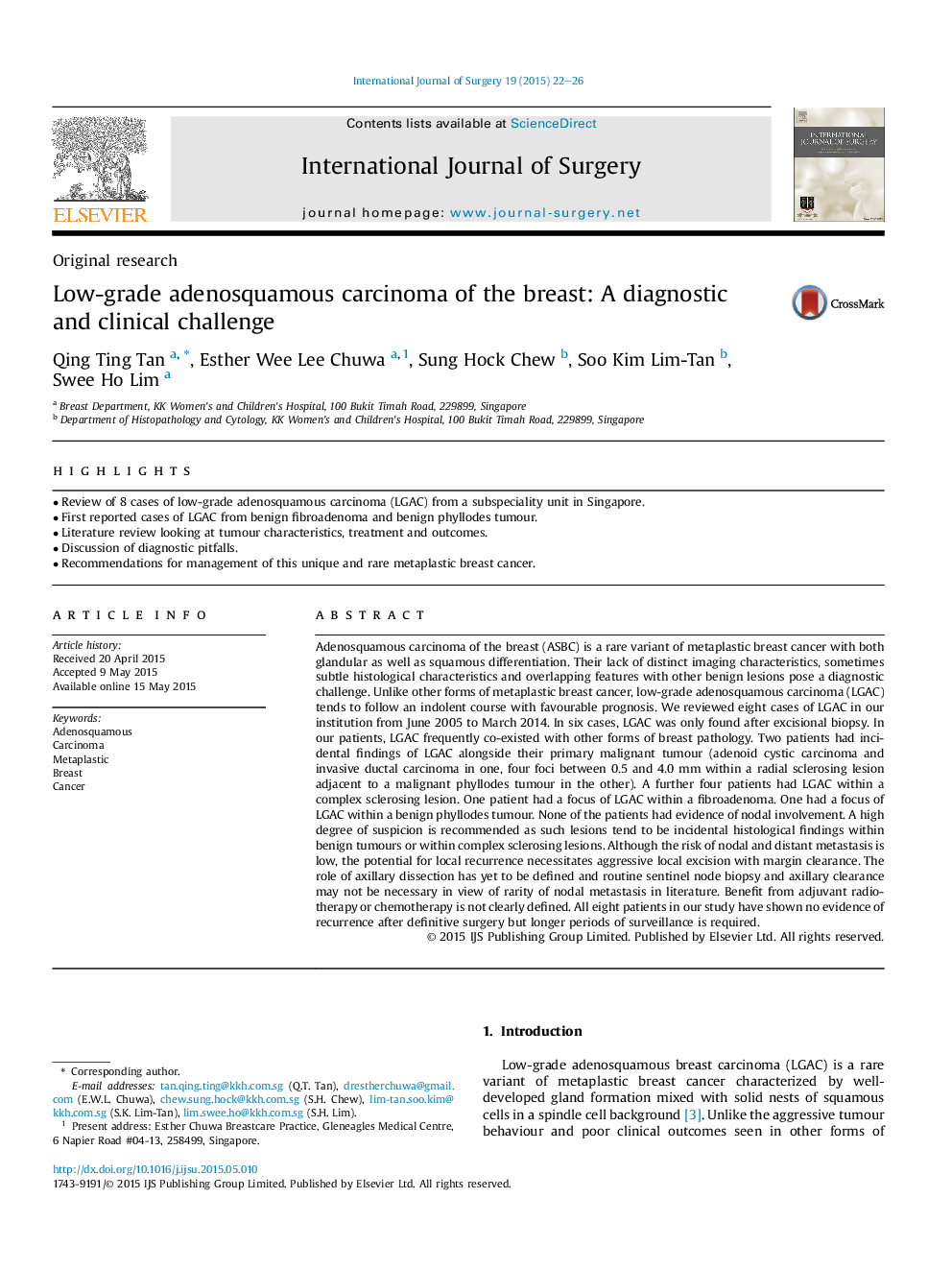| کد مقاله | کد نشریه | سال انتشار | مقاله انگلیسی | نسخه تمام متن |
|---|---|---|---|---|
| 6251458 | 1611974 | 2015 | 5 صفحه PDF | دانلود رایگان |
- Review of 8 cases of low-grade adenosquamous carcinoma (LGAC) from a subspeciality unit in Singapore.
- First reported cases of LGAC from benign fibroadenoma and benign phyllodes tumour.
- Literature review looking at tumour characteristics, treatment and outcomes.
- Discussion of diagnostic pitfalls.
- Recommendations for management of this unique and rare metaplastic breast cancer.
Adenosquamous carcinoma of the breast (ASBC) is a rare variant of metaplastic breast cancer with both glandular as well as squamous differentiation. Their lack of distinct imaging characteristics, sometimes subtle histological characteristics and overlapping features with other benign lesions pose a diagnostic challenge. Unlike other forms of metaplastic breast cancer, low-grade adenosquamous carcinoma (LGAC) tends to follow an indolent course with favourable prognosis. We reviewed eight cases of LGAC in our institution from June 2005 to March 2014. In six cases, LGAC was only found after excisional biopsy. In our patients, LGAC frequently co-existed with other forms of breast pathology. Two patients had incidental findings of LGAC alongside their primary malignant tumour (adenoid cystic carcinoma and invasive ductal carcinoma in one, four foci between 0.5 and 4.0Â mm within a radial sclerosing lesion adjacent to a malignant phyllodes tumour in the other). A further four patients had LGAC within a complex sclerosing lesion. One patient had a focus of LGAC within a fibroadenoma. One had a focus of LGAC within a benign phyllodes tumour. None of the patients had evidence of nodal involvement. A high degree of suspicion is recommended as such lesions tend to be incidental histological findings within benign tumours or within complex sclerosing lesions. Although the risk of nodal and distant metastasis is low, the potential for local recurrence necessitates aggressive local excision with margin clearance. The role of axillary dissection has yet to be defined and routine sentinel node biopsy and axillary clearance may not be necessary in view of rarity of nodal metastasis in literature. Benefit from adjuvant radiotherapy or chemotherapy is not clearly defined. All eight patients in our study have shown no evidence of recurrence after definitive surgery but longer periods of surveillance is required.
Journal: International Journal of Surgery - Volume 19, July 2015, Pages 22-26
